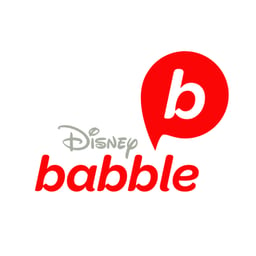 Have you ever considered telling your prospects, they shouldn’t buy from you? Telling your investors or prospective investors why not to invest, or what’s wrong with your business? How about sharing with the people who don’t support your ideas, they’re right?
Have you ever considered telling your prospects, they shouldn’t buy from you? Telling your investors or prospective investors why not to invest, or what’s wrong with your business? How about sharing with the people who don’t support your ideas, they’re right?
It seems counter intuitive, however there are several advantages to be gained by letting the people you want to buy, support, or invest in your idea, know why they shouldn’t.
Marketing professors Marian Friestad and Peter Wright find when we’re aware that someone is trying to persuade us, we naturally raise our mental shields. Rampant confidence is a red flag—a signal that we need to defend ourselves against weapons of influence.
 The following story from Adam Grant’s Originals is powerful example of how one business owner put his worst foot forward to success. So powerful I plan to write a blog on why you shouldn’t hire Positioning Systems as your business coach. Look for it in the near future.
The following story from Adam Grant’s Originals is powerful example of how one business owner put his worst foot forward to success. So powerful I plan to write a blog on why you shouldn’t hire Positioning Systems as your business coach. Look for it in the near future.
How Putting Worst Foot Forward Grew Babble
After having their first child, Rufus Griscom and Alisa Volkman, appalled by the amount of false advertising and bad advice being offered about parenting, started an online magazine and blog network called Babble. It challenged the dominant parenting clichés and tackled the cold, hard truth with humor. In 2009, Griscom pitched Babble to venture capitalists, doing the exact opposite of what every entrepreneur is taught to do: he presented a slide listing the top five reasons not to invest in his business.
You’d think it would kill his pitch. Investors look for reasons to say yes. Griscom hand delivering a list of reasons to say no. Entrepreneurs talk about the upsides of their companies, not the downsides. Griscom’s counterintuitive approach worked: Babble brought in $3.3 million in funding.
How did Griscom arrive at this?
 At the first two Babble board meetings Griscom shared everything going right with the business. hoping to excite the board about the company’s momentum and potential. “Every time I would say something emphasizing the upside, I would get skeptical responses,” he recalls. “Unbridled optimism comes across as salesmanship; it seems dishonest somehow, and as a consequence it’s met with skepticism. Everyone is allergic to the feeling, or suspicious of being sold.”
At the first two Babble board meetings Griscom shared everything going right with the business. hoping to excite the board about the company’s momentum and potential. “Every time I would say something emphasizing the upside, I would get skeptical responses,” he recalls. “Unbridled optimism comes across as salesmanship; it seems dishonest somehow, and as a consequence it’s met with skepticism. Everyone is allergic to the feeling, or suspicious of being sold.”
Worst Foot First
The third board meeting, Griscom reversed his approach, opening with a candid discussion of everything that was going wrong with the company and what was keeping him up at night. Although this tactic might be familiar in a debate, it is highly unconventional for an entrepreneur. Board members, though, responded much more favorably than previous meetings, shifting their attention away from self-defense and toward problem solving. Griscom decided to try the same approach with investors, and noticed a similar reaction: they let their guard down. “When I put up a slide that says ‘Here’s why you shouldn’t buy this company,’ the first response was laughter. Then you could see them physically relax. It’s sincere; it doesn’t smell, feel, or look anything like sales. They’re no longer being sold.”
Two years later, Griscom made a sales visit to discover if Disney might be interested in acquiring Babble. You might believe for this, it would suicide to lead with the downsides. To admit your startup has problems is one thing; you can promise to fix the flaws. When you’re selling an established company, you should emphasize the silver linings, because you’re not going to be around long enough to do anything about the clouds!
Griscom did it again. One of his slides read: “Here’s Why You Should Not Buy Babble.” Presenting to the family division of digital at Disney, he explained that user engagement, at less than three page views per visit, was lower than expected. Babble was supposed to be a parenting website, but 40 percent of the posts were about celebrities. And the back end of the website was in sore need of retooling.
 Disney ended up buying the company for $40 million.
Disney ended up buying the company for $40 million.
Adam Grant explains why this happened: “In both situations, Griscom was presenting ideas to people who had more power than he had, and trying to convince them to commit their resources. Most of us assume that to be persuasive, we ought to emphasize our strengths and minimize our weaknesses. That kind of powerful communication makes sense if the audience is supportive.
But when you’re pitching a novel idea or speaking up with a suggestion for change, your audience is likely to be skeptical. Investors are looking to poke holes in your arguments; managers are hunting for reasons why your suggestion won’t work.”
Under those circumstances, for at least four reasons, it’s actually more effective to adopt Griscom’s form of powerless communication by accentuating the flaws in your idea.
Reasons 1 & 2
- The first advantage is that leading with weaknesses disarms the audience.
Being forthright about faults alters how audiences evaluate us. In Teresa Amabile’s experiment asked people to gauge the intelligence and expertise of book reviewers. Would adjusting the tone of reviews change people’s judgments of the critics? She took actual book reviews from the New York Times and edited them so the content was identical, but the evaluations were either flattering or scathing.
People think an amateur can appreciate art, but it takes a professional to critique it. Merely changing a handful of words from positive to negative, made the critical reviewer sound smarter. “Prophets of doom and gloom appear wise and insightful,” Amabile writes, “while positive statements are seen as having a naïve ‘Pollyanna’ quality.”
- The second benefit of leading with the limitations of an idea: it makes you look smart. Rufus Griscom first discovered this early in his career, which started in publishing. “There’s nothing more shameful than writing a review that’s too positive,” he learned. Even if reviewers loved a book, they felt an obligation to add a paragraph at the end noting where it fell short. According to Griscom, it’s their way of saying, “I’m not a chump; I was not totally snowed by this author. I am discerning.” When he told investors about the problems with Babble, he demonstrated he wasn’t snowed by his own ideas or trying to snow them; he was a shrewd judge of his shortcomings. He was smart enough to do his homework and anticipate some of the problems that they would spot.
There are two more reasons to consider sharing your weakness. We’ll share them next blog.
Growth demands Strategic Discipline.
Positioning Systems helps mid-sized ($5M - $250M) business Scale-UP. We’re experts at helping you determine Your One Thing! To achieve growth, you need to evolve in today’s rapidly changing economic environment. Are you avoiding a conversation with yourself on how to can grow your business? Contact dwick@positioningsystems.com to Scale Up your business! Take our Four Decisions Needs Assessment to discover how your business measures against other Scaled Up companies. We’ll contact you.
Reason 3 & 4 to Put Your Worst Foot Forward – Next Blog
How we process information, and building trust form the basis for reason 3 and 4 to share your weaknesses. You’ll discover those, next blog.






.jpeg?width=150&height=135&name=Hand%20with%20marker%20writing%20the%20question%20Whats%20Next_%20(1).jpeg)

